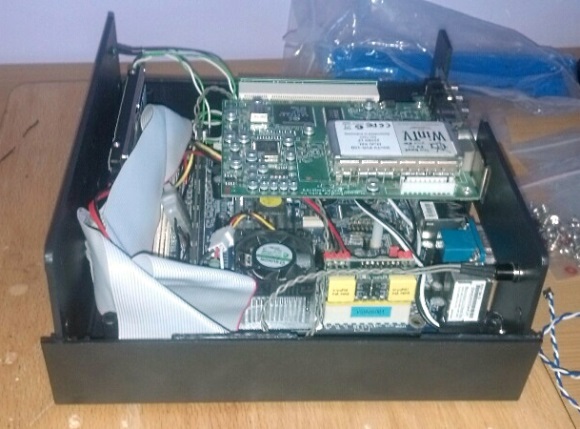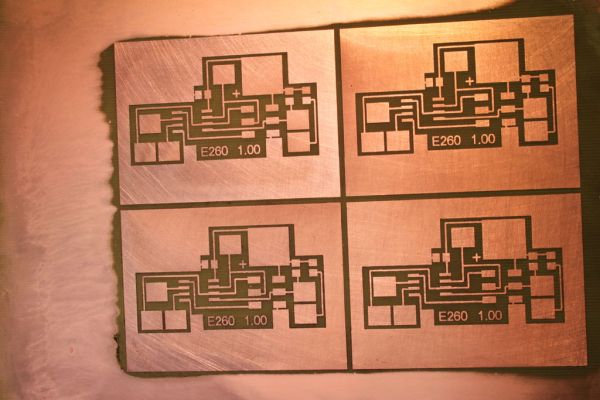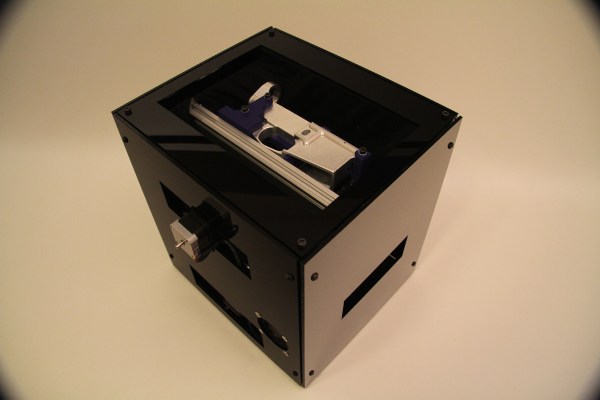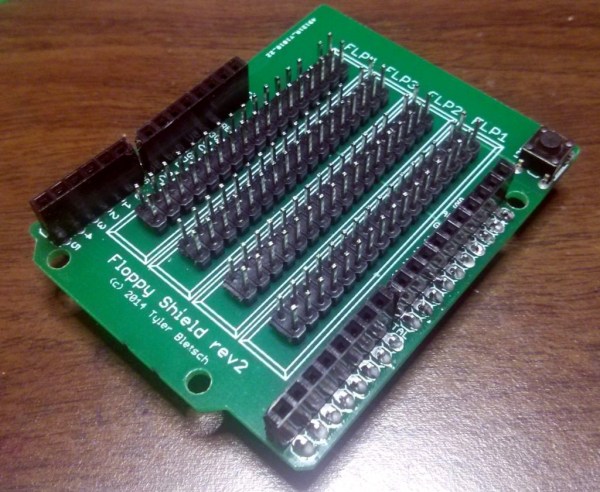Remember in the late 90s and early 2000s when everything had blue LEDs in them? Blinding blue LEDs that lit up a dark room like a Christmas tree? Nobel prize. There’s a good /r/askscience thread on why this is so important. The TL;DR is that it’s tough to put a p-type layer on gallium nitride.
Have a Segway and you’re a member of the 501st? Here’s your Halloween costume. It’s a model of the Aratech 74-Z speeder bike, most famously seen careening into the side of trees on the forest moon of Endor.
[Andrew] needed something to do and machined an iPhone 5 out of a block of aluminum. Here’s the video of icon labels being engraved. The machine is a Denford Triac with a six station auto tool changer. He’s running Mach3, and according to him everything – including the correct tooling – cost far too much money.
Another [Andrew] was working the LEGO booth at Maker Faire New York and has finally gotten his LEGO Mindstorms Minecraft Creeper build written up. Yes, it’s probably smarter than your average Minecraft Creeper, and this one also blows up. He also had a physical version of the classic video game from 1979, Lunar Lander. Both are extremely awesome builds, and a great way to attract kids of all ages to a booth.
 [Wilfred] was testing a titanium 3D printer at work and was looking for something to print. The skull ‘n wrenches was a suitable candidate, and the results are fantastic. From [Wilfred]: “Just out of the printer the logo looks amazing because it isn’t oxidized yet (inside the printer is an Argon atmosphere) Then the logo moves to an oven to anneal the stress made by the laser. But then it gets brown and ugly. After sandblasting we get a lovely bluish color as you can see in the last picture.”
[Wilfred] was testing a titanium 3D printer at work and was looking for something to print. The skull ‘n wrenches was a suitable candidate, and the results are fantastic. From [Wilfred]: “Just out of the printer the logo looks amazing because it isn’t oxidized yet (inside the printer is an Argon atmosphere) Then the logo moves to an oven to anneal the stress made by the laser. But then it gets brown and ugly. After sandblasting we get a lovely bluish color as you can see in the last picture.”
The folks at Lulzbot/Aleph Objects are experimenting with their yet-to-be-released printer, codenamed ‘Begonia’. They’re 2D printing, strangely enough, and for only using a standard Bic pen, the results look great.
Everyone is going crazy over the ESP8266 UART to WiFi module. There’s another module that came up on Seeed recently, the EMW3162. It’s an ARM Cortex M3 with plenty of Flash, has 802.11 b/g/n, and it’s $8.50 USD. Out of stock, of course.




 [Wilfred] was testing a titanium 3D printer at work and was looking for something to print. The skull ‘n wrenches was a suitable candidate, and the results are fantastic. From [Wilfred]: “Just out of the printer the logo looks amazing because it isn’t oxidized yet (inside the printer is an Argon atmosphere) Then the logo moves to an oven to anneal the stress made by the laser. But then it gets brown and ugly. After sandblasting we get a lovely bluish color as you can see in the last picture.”
[Wilfred] was testing a titanium 3D printer at work and was looking for something to print. The skull ‘n wrenches was a suitable candidate, and the results are fantastic. From [Wilfred]: “Just out of the printer the logo looks amazing because it isn’t oxidized yet (inside the printer is an Argon atmosphere) Then the logo moves to an oven to anneal the stress made by the laser. But then it gets brown and ugly. After sandblasting we get a lovely bluish color as you can see in the last picture.”

 Anyone can legally buy a barrel, trigger, stock, upper receiver, and various other parts to build an AR-15. To complete the weapon, they only need to buy an 80% lower receiver and perform the last 20% of the metal work. This work can be performed with everything from a drill press to a milling machine to hand tools. Ghost Gunner partially automates this process, making it easier and faster to complete lower receivers and build weapons.
Anyone can legally buy a barrel, trigger, stock, upper receiver, and various other parts to build an AR-15. To complete the weapon, they only need to buy an 80% lower receiver and perform the last 20% of the metal work. This work can be performed with everything from a drill press to a milling machine to hand tools. Ghost Gunner partially automates this process, making it easier and faster to complete lower receivers and build weapons.











